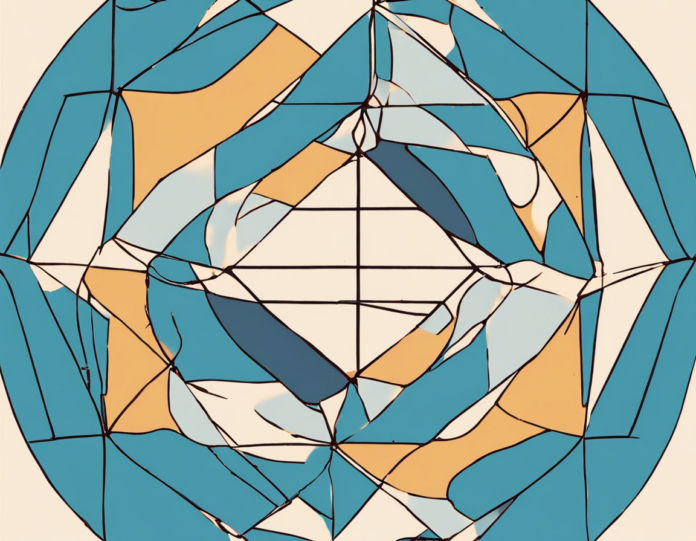When it comes to geometric shapes, the relationship between different types of figures can sometimes reveal fascinating properties. One such interesting relationship exists between a parallelogram that circumscribes a circle and the rhombus that arises from this configuration. In this article, we will explore the concept of a parallelogram circumscribing a circle and delve into how this leads to proving the properties of a rhombus.
The Parallelogram Circumscribing a Circle
Let's begin by defining a parallelogram. A parallelogram is a four-sided figure in which both pairs of opposite sides are parallel. Now, consider a circle inscribed within a parallelogram in such a way that the circle touches each side of the parallelogram exactly once. This circle is known as the incircle of the parallelogram, and the parallelogram is said to circumscribe the circle.
Understanding the Rhombus
A rhombus, also known as a diamond or a rhomb, is a type of quadrilateral in which all four sides are of equal length. Equivalently, a rhombus can be defined as a parallelogram in which all sides have equal lengths.
Proving the Rhombus Property
- Diagonals of a Parallelogram:
In a parallelogram, the diagonals bisect each other. This means that they intersect at their midpoints, splitting each diagonal into two equal segments. Let us denote the intersection point of the diagonals as point O.
- Properties of the Incircle:
The incircle of a parallelogram is a unique circle that is tangent to all four sides. This means that the radius of the incircle is perpendicular to each side of the parallelogram it touches.
- Applying the Incircle Property:
Given that the incircle is tangent to all sides of the parallelogram, each side of the parallelogram is perpendicular to the radius of the incircle at the point of contact. This implies that the diagonals of the parallelogram are also perpendicular to the radius of the incircle.
- Diagonals of a Rhombus:
In a rhombus, the diagonals are perpendicular bisectors of each other. This means that the diagonals intersect at right angles and divide each other into two equal parts.
- Establishing the Connection:
By combining the properties of a parallelogram that circumscribes a circle and those of a rhombus, we can conclude that a parallelogram that circumscribes a circle must be a rhombus. The diagonals of the parallelogram are both bisected and divided into right angles by the radius of the incircle, satisfying the properties of a rhombus.
Key Takeaways
- A parallelogram that circumscribes a circle is a rhombus.
- The diagonals of the parallelogram are perpendicular bisectors of each other.
- The circle inscribed within the parallelogram is tangent to all four sides.
Frequently Asked Questions (FAQs)
-
What is the difference between a circumscribed circle and an inscribed circle?
-
A circumscribed circle is a circle that passes through all the vertices of a polygon, while an inscribed circle is tangent to all sides of the polygon.
-
How do you calculate the area of a rhombus if you know the length of one side?
-
The area of a rhombus can be calculated using the formula: Area = (Product of the diagonals) / 2.
-
Can all parallelograms be circumscribed by a circle?
-
No, not all parallelograms can be circumscribed by a circle. Only certain types of parallelograms, such as rhombuses and squares, can have a circumscribed circle.
-
Are all rhombuses also parallelograms?
-
Yes, all rhombuses are parallelograms because they have opposite sides that are parallel.
-
What other properties can be derived from a circumscribed circle in geometry?
-
A circumscribed circle can help determine angle relationships, side lengths, and other geometric properties of the figure it encompasses.
By exploring the relationship between a parallelogram that circumscribes a circle and the properties of a rhombus, we uncover the interconnected nature of geometric shapes and the elegant patterns that emerge within them. This concept not only sheds light on the properties of these specific shapes but also enhances our understanding of geometry as a whole.

